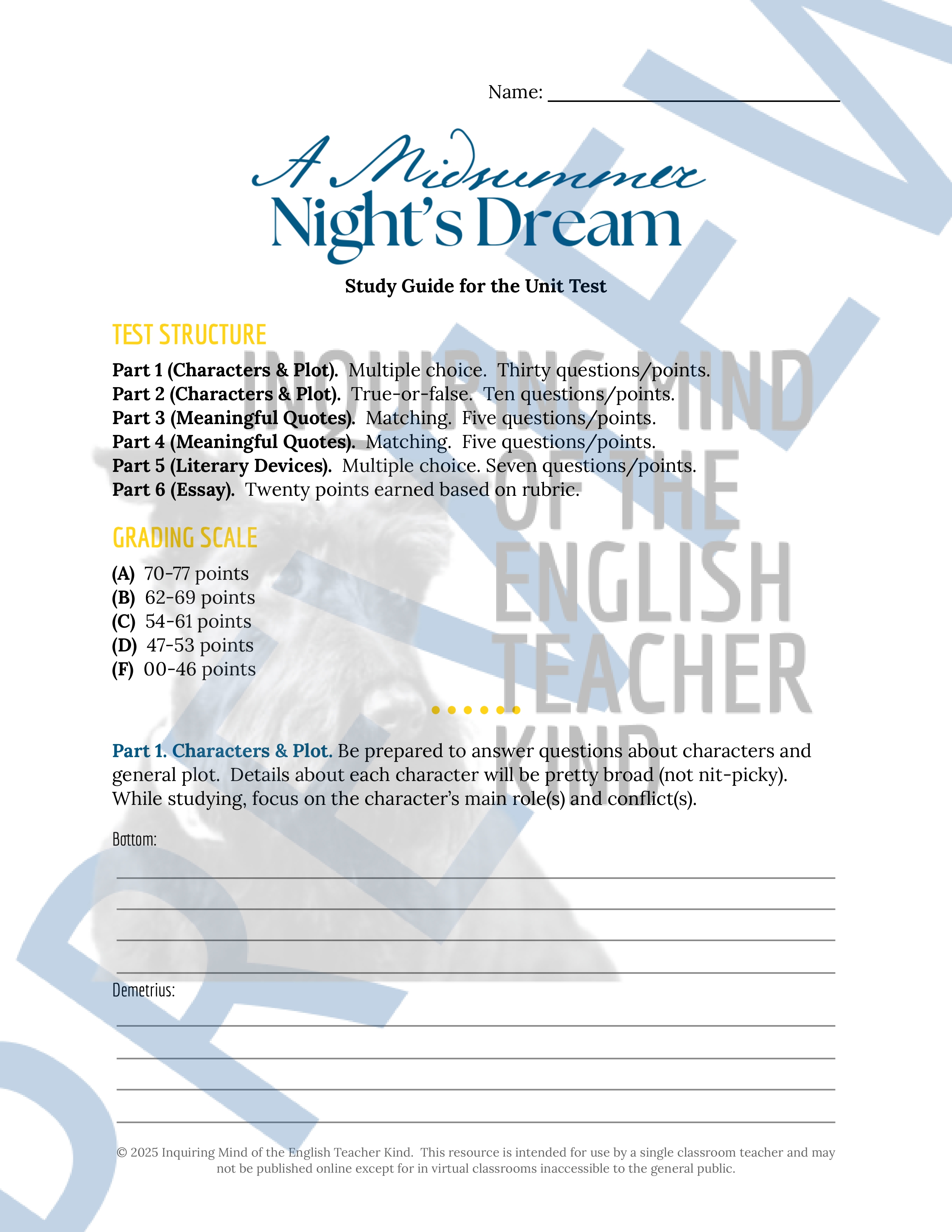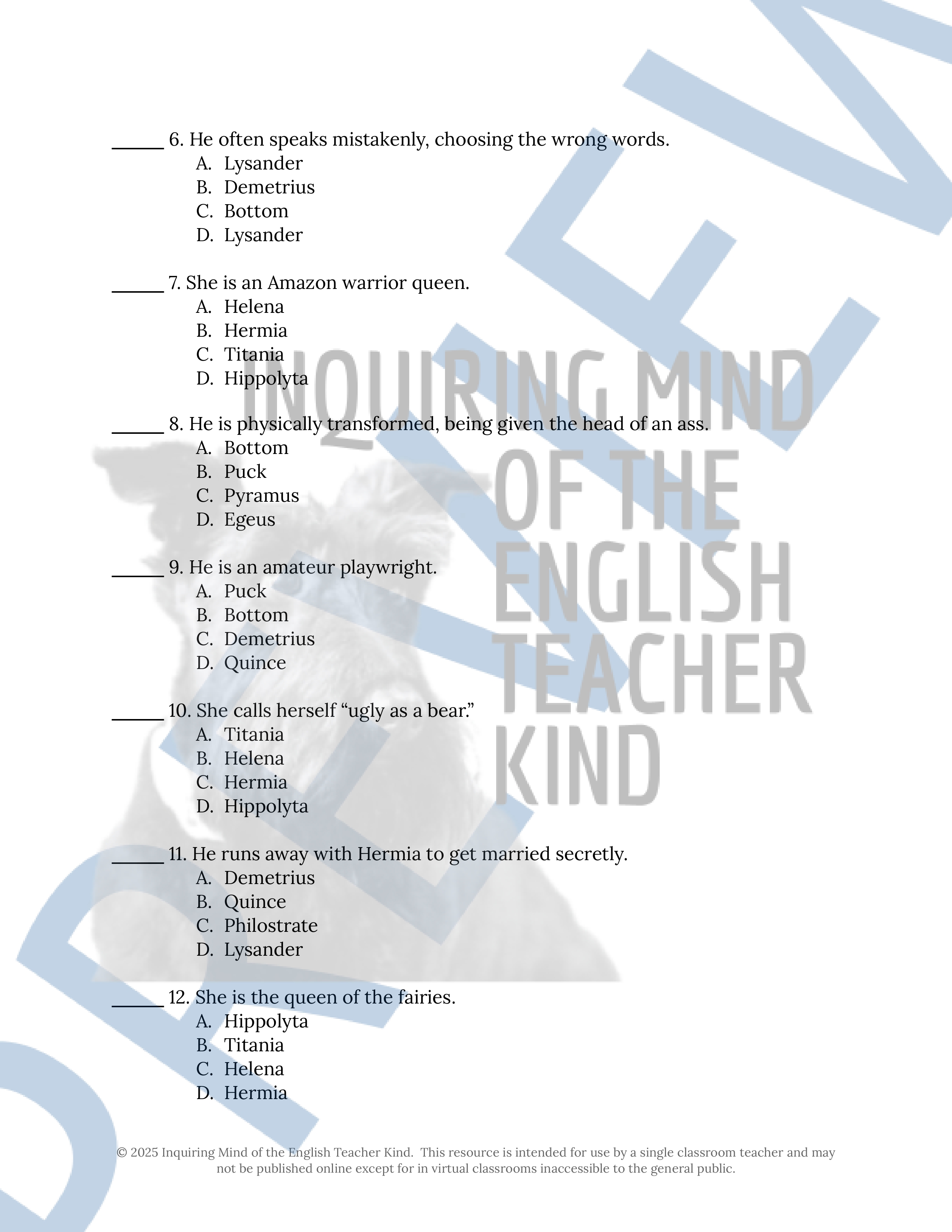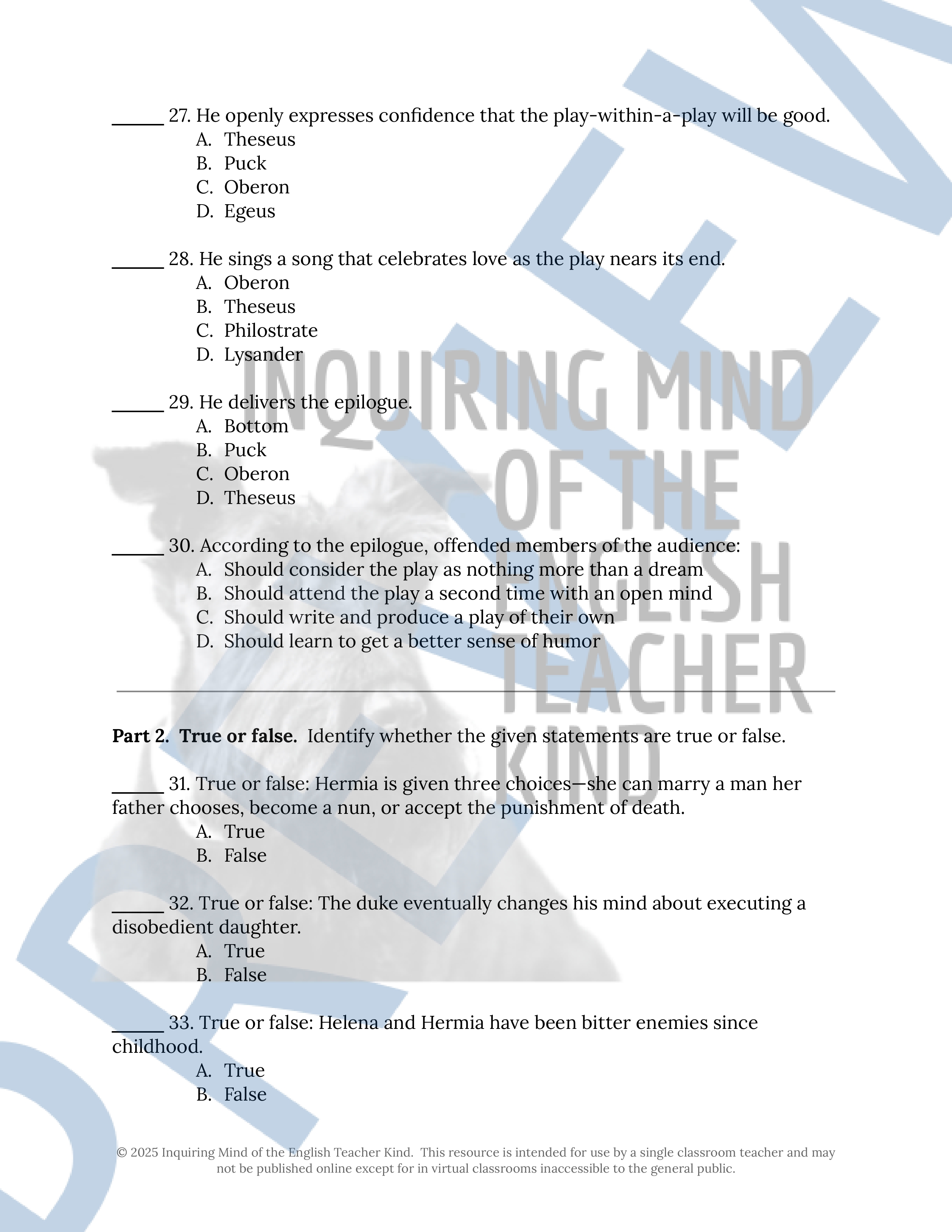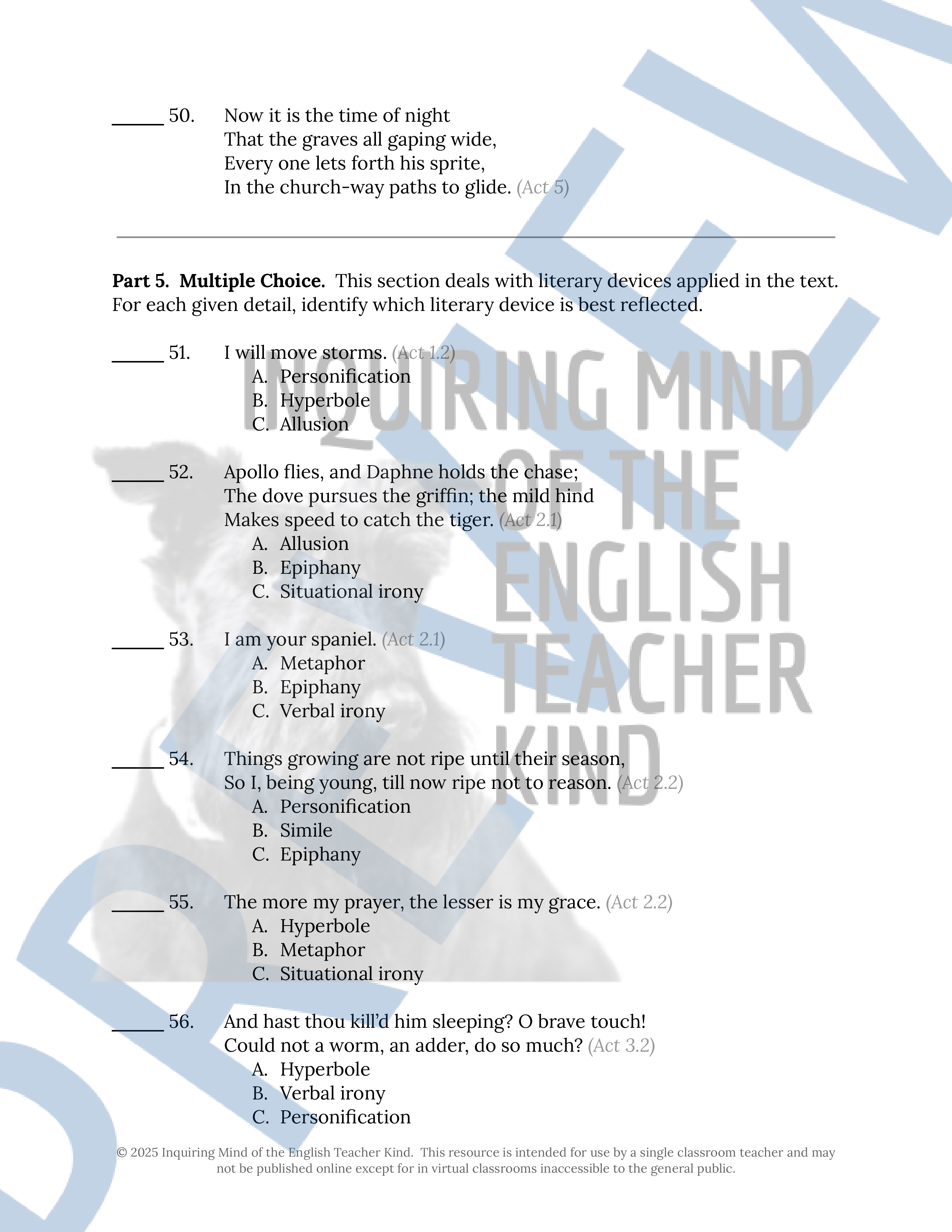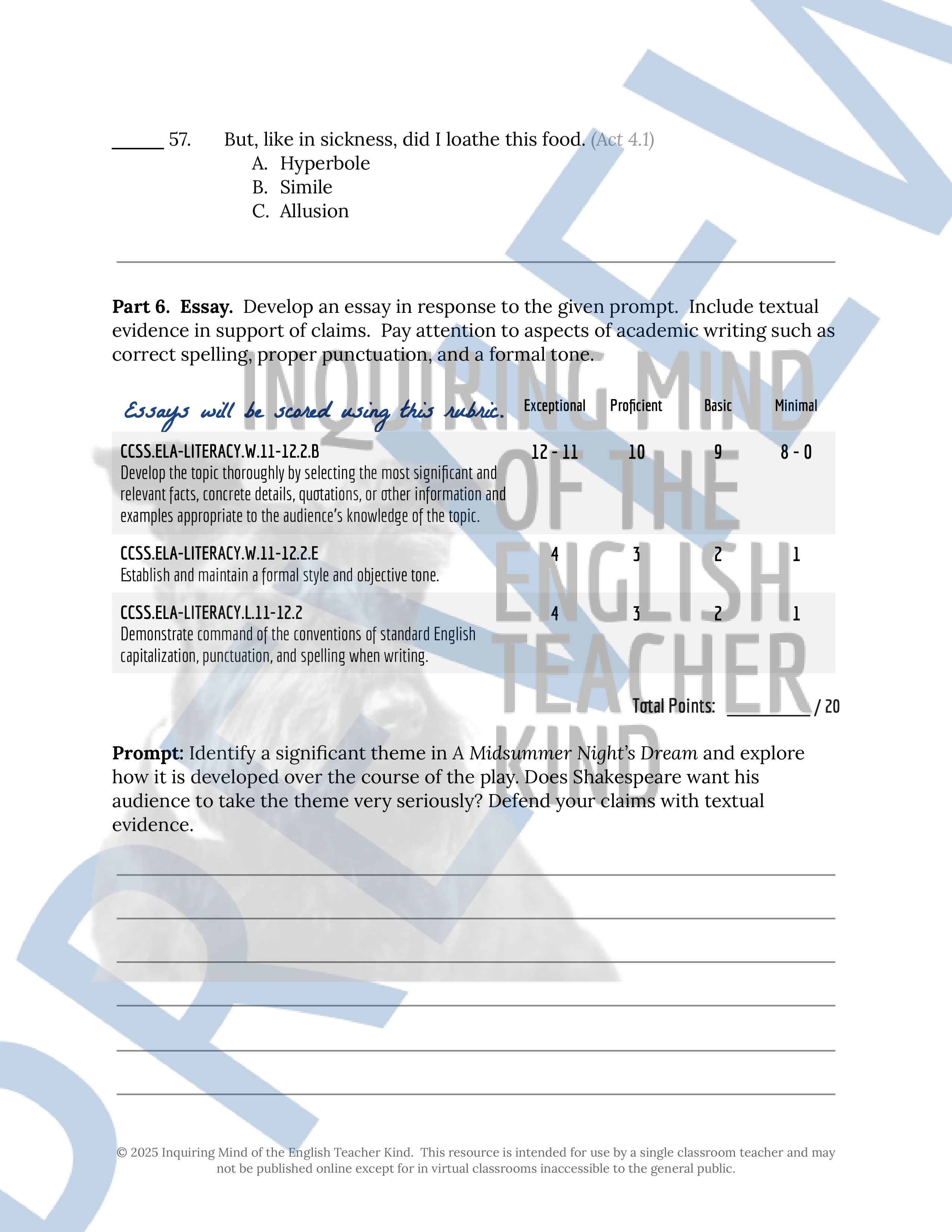A Midsummer Night's Dream Quizzes, Worksheets, Test, and Answer Keys Bundle
Use this low-prep bundle to eliminate assessment-planning responsibilities and help high school readers engage meaningfully with William Shakespeare's comedy *A Midsummer Night's Dream*. Plot-based quizzes (one per Act), vocabulary development activities (three per Act), close reading analysis worksheets (one per scene), a final exam, and answer keys are provided. Materials are delivered in editable Word Document and printable PDF formats. With these activities and assessments, students will do the following:
* Read for literal comprehension
* Infer the intended effects of Shakespeare's word choices and figurative language
* Consider what the given excerpt reflects about Shakespeare's mindset
* Describe tone in context
* Determine the functions of given details/excerpts
* Explore how characters think, behave, interact, and develop
* Compare and contrast characters
* Evaluate whether Oberon's use of magic is beneficial in any way
* Evaluate how the term paramour (as it is used in the text) is applicable to the character of Bottom
* Identify the intended audience of Puck's concluding speech (epilogue)
* Apply knowledge of literary devices such as allusion, assonance, dramatic irony, euphemism, epiphany, hyperbole, malapropism, metaphor, onomatopoeia, personification, simile, situational irony, symbolism, verbal irony, and more
* Conduct research as needed to answer questions about mythological, historical, and literary figures (Hecate, Tartar, and Robin Goodfellow)
* Consider themes in context
* Generate an essay articulating a significant theme and exploring how it is developed over the course of the play
* Support inferences and claims with sound reasoning and relevant evidence
* Write about Shakespearean drama with clarity, accuracy, and precision

